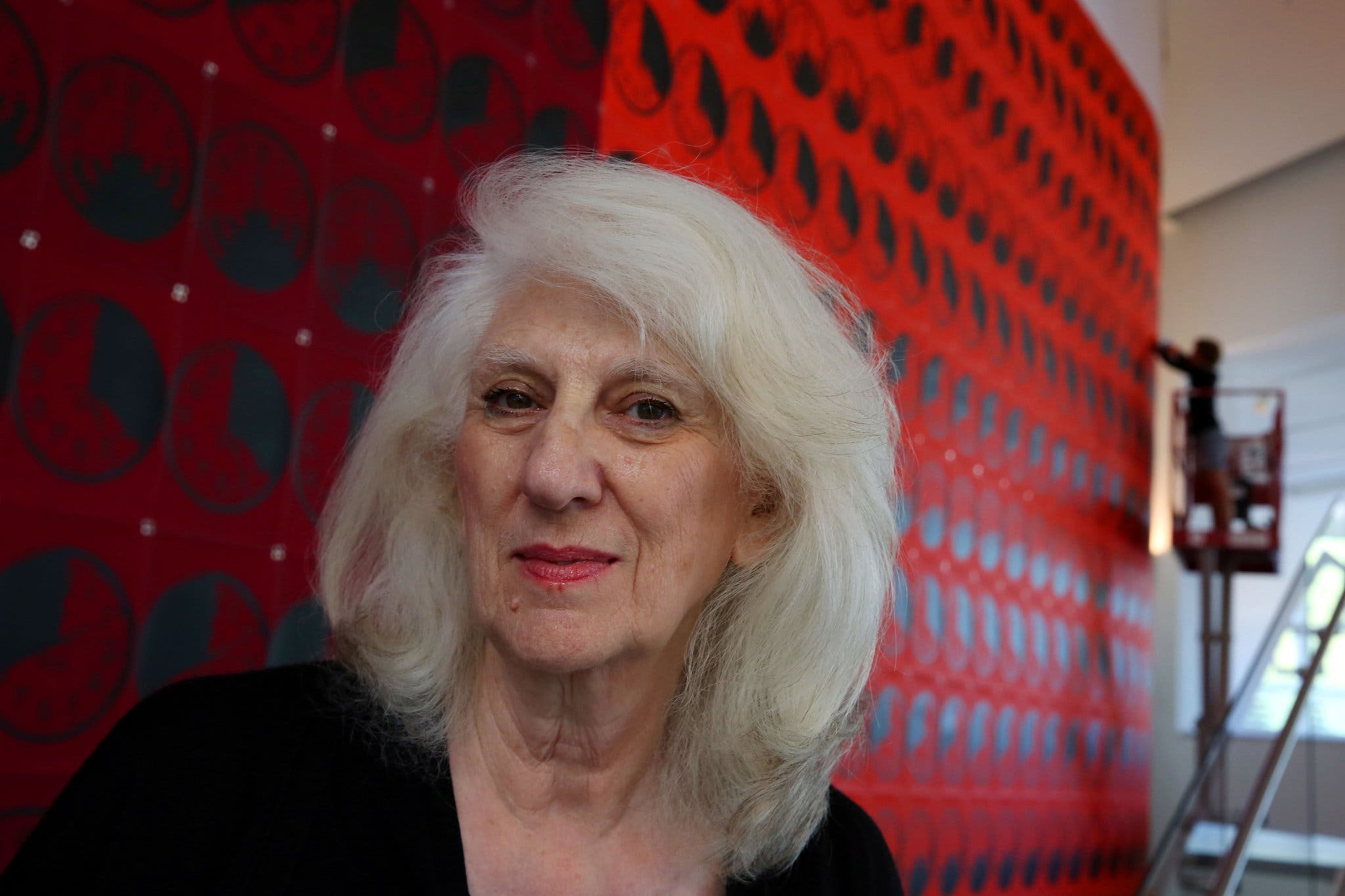American artist Mierle Laderman Ukeles served as New York City’s Department of Sanitation (DSNY) resident artist for 39 years. This unpaid position allowed her to create Care, a manifesto of her life's work that reflects on sanitation on a personal, societal, and planetary level.
By doing so, her oeuvre drew parallels between the care work done by unpaid housewives and work done by underpaid New York City sanitation workers. This act allowed Ukeles to showcase that sanitation, done by anyone as a form of labour, deserves further acknowledgement and appreciation. A reality which makes her career relevant to the United Nations Sustainable Development Goal of Gender Equality, Clean Water and Sanitation and Decent Work And Economic Growth.

Ukeles wrote her manifesto Care after she became a mother and struggled to juggle motherhood with her career as an artist. She chose to title her manifesto Care because, for her, labour was categorized into two ends of a spectrum: development and maintenance. She defines development as the creation of new things, innovations and progress that are highly valued in society. Development tended to be masculine jobs spearheaded by men and the patriarchy. Meanwhile, maintenance, the job of caring for things that have been developed, tends to be less valued and largely considered a feminine affair, left for women to deal with. Hence, Ukeles decided that if society did not care about maintenance work, she would do so with her art.
Ukeles then split her act of caring into three parts: the personal, the societal and the planetary level. On the personal level, she spoke about care for herself and for those closest to her, something that she was able to profoundly reflect on in motherhood as she cared for her children.
She began making pieces like Dressing to Go Out/Undressing to Go In, in which she took photographs of her getting her children ready to go out and again when they returned home and prepared for a day in. Ukeles took many photographs of each action to document and highlight just how repetitive and arduous this often-overlooked process in child care can be.
She also created similar pieces, such as Rinsing a B.M. Diaper, where she documented herself changing her children’s dirty diapers. Again and again, Ukeles took one too many photographs to highlight the volume of the work. By doing so, she created unapologetically feminist pieces that allowed her to state that domestic work is indeed work. In fact, unpaid labour has burdened women for centuries under the guise of care.
After Ukeles had satisfied herself with her journey into personal care, she found its mirror in society in New York City’s sanitation workers (often referred to as san men). These workers do everything from trash collection to human waste management and even sweep the entire city’s streets clean. However, for the work they do, they are meagrely compensated, much like women are in their domestic labour. Here again, Ukeles referred to her manifesto, where she acknowledged that maintenance or care work was considered less than development work. Even in 2024, New York City’s san men make $16 an hour, exactly the city’s minimum wage.
So, Ukeles set out to repeat her artistic process on the San men. She began by first requesting to be the DSNY’s artist in residence, an unpaid position she held for 39 years. During this time, she created numerous photographs and performance pieces, including her Touch Sanitation Performance, in which she documented the San men’s daily routine on the job.
When the body of work was displayed at the Queens Museum in 2017, Touch Sanitation Performance filled up an entire gallery’s walls. It was a feast for the eyes made up of photographs, maps, videos, typewritten schedules and clippings of paraphernalia from the san men’s shift. In many of the photographs, Ukeles herself can also be seen talking to the san men, helping them haul trash bags or having a cigarette with them by bins and trash trucks. Here, she had shown both the san men and her audiences that she indeed cared for and appreciated the work that they were doing. She saw herself as their equals and wanted her audiences to feel the same way.
Mierle Laderman Ukeles’ life and four decades of work with the san men have left a lasting impression on the art world and the greater public. She showed blatantly just much care and labour went into domestic and sanitation work. All while bravely stating that it is something that more people ought to care about and show appreciation for. By photographing them, Ukeles elevated sanitation and domestic work as pieces of art, as the dedication that mothers, housewives and san men have shown really has been at the service of society.
Find out more about Mierle Laderman Ukeles’ pieces by checking their artist profiles on Monoskop, the Queens Museum and Hyperallergic.
